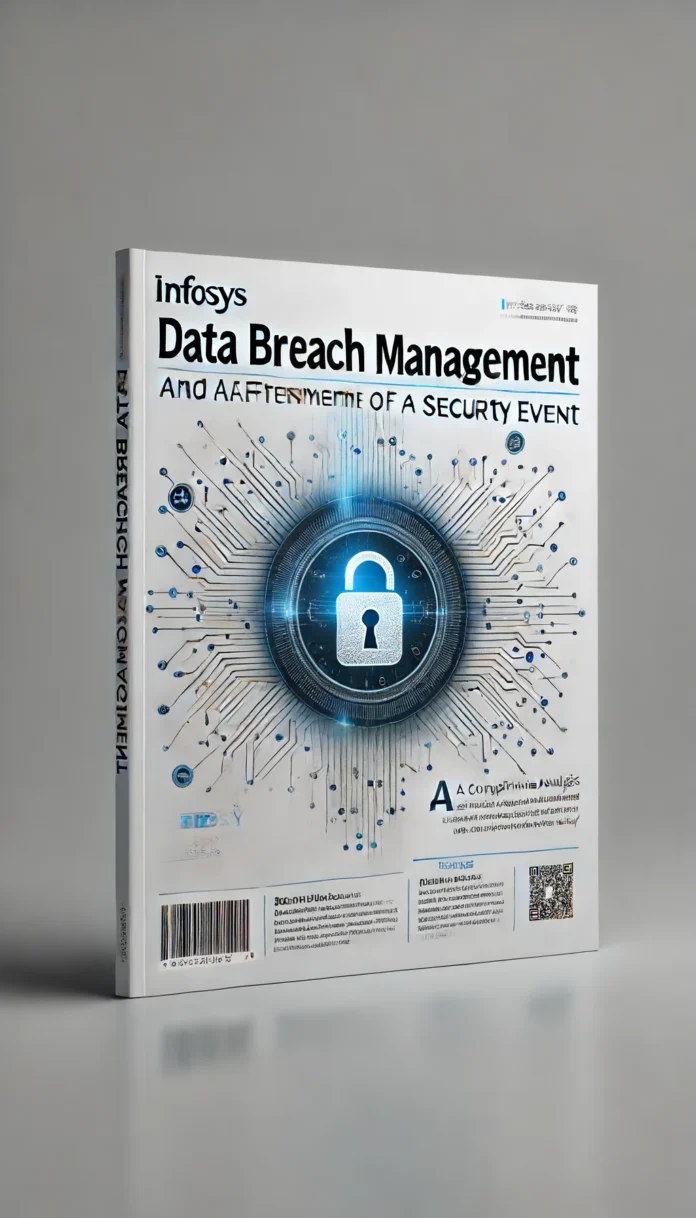Managing extensive databases of candidate and employee information is a critical function for recruitment agencies. As these agencies handle vast amounts of data daily, ensuring this data is managed efficiently and securely becomes paramount. Here, employee records management software plays a vital role. This software helps streamline the storage, retrieval, and management of employee records, enhancing operational efficiency and ensuring compliance with legal and regulatory requirements.
As a compliance officer, you understand the importance of adhering to stringent data protection regulations. Ensuring that your organization’s employee records management system is up to the task can be challenging, but it is essential for protecting sensitive information and maintaining trust with both candidates and employees.
In this article, we will delve into the specific benefits of employee records management software, particularly focusing on how it helps compliance officers ensure their organizations meet legal and regulatory requirements. By exploring key features, real-world examples, and best practices, we aim to provide a comprehensive guide to optimizing your employee records management processes.
The Importance of Data Management in Recruitment Agencies
In the fast-paced world of recruitment, managing data efficiently is more than just a necessity—it’s a competitive advantage. Recruitment agencies handle vast amounts of information, from candidate profiles and resumes to interview notes and employment histories. This data is crucial for making informed hiring decisions and ensuring a smooth recruitment process.
However, managing this data manually poses significant challenges. Errors in data entry, difficulties in retrieving information, and the sheer volume of records can lead to inefficiencies and mistakes. For compliance officers, these issues are even more concerning due to the potential for regulatory breaches. Mismanagement of sensitive information can result in hefty fines and damage to the agency’s reputation.
Accurate and up-to-date data management is essential. It not only helps in making better hiring decisions but also ensures that the agency remains compliant with data protection regulations. This is where employee records management software becomes indispensable. By automating many of the data management tasks, this software reduces the risk of errors, enhances data integrity, and ensures that all records are maintained in a secure and accessible manner.
The importance of such systems is underscored by the increasing complexity of data protection laws globally. Regulations like the General Data Protection Regulation (GDPR) in Europe set stringent standards for data handling. Compliance officers must ensure that their agency’s data management practices meet these standards to avoid legal repercussions. Employee records management systems provide the necessary tools to help agencies stay compliant, offering features like automated data updates, secure storage solutions, and audit trails to track data access and changes.
Introduction to Employee Records Management Software
Employee records management software is a specialized tool designed to streamline the organization, storage, and retrieval of employee-related data. This software is essential for recruitment agencies, as it helps manage vast amounts of information efficiently and securely.
Definition and Functionality
Employee records management software, often referred to as HR records management systems, encompasses a range of functionalities designed to automate and simplify the management of employee data. This software handles everything from the initial creation of a candidate profile to the archiving of employee records. Its core functions include data storage, search and retrieval, automated data entry, and integration with other systems.
Key Features
- Data Storage: Centralized repositories where all employee-related data can be securely stored. This ensures that all information is easily accessible when needed.
- Search and Retrieval: Advanced search functionalities that allow users to quickly find specific records using various filters and keywords.
- Automation of Administrative Tasks: Automates routine tasks such as data entry, updates, and notifications, reducing the burden on HR staff and minimizing the risk of errors.
- Integration with Other Systems: Seamless integration with other HR tools, such as payroll systems, applicant tracking systems (ATS), and performance management software.
- Security and Compliance: Built-in security features, such as encryption and access controls, ensure that sensitive data is protected and that the organization complies with data protection regulations.
- Audit Trails: Tracks changes and accesses to data, providing a transparent history of who accessed or modified records, which is crucial for compliance purposes.
Types of Software
There are several types of employee records management software available, each tailored to different needs:
- Cloud-Based Solutions: These are hosted on the vendor’s servers and accessed via the internet, offering flexibility and scalability.
- On-Premises Solutions: Installed and run on the organization’s own servers, providing greater control over data but requiring more maintenance.
- Hybrid Solutions: Combine both cloud and on-premises features, offering a balance of flexibility and control.
In essence, employee records management software is a vital tool for recruitment agencies. It not only simplifies the management of employee data but also ensures that this data is handled in a secure and compliant manner. This software enables agencies to focus on their core activities—finding and placing the best candidates—while maintaining the integrity and security of their data.
Benefits of Employee Records Management Software for Recruitment Agencies
Employee records management software offers numerous benefits that significantly enhance the operations of recruitment agencies. These advantages span from improving efficiency to ensuring compliance with legal and regulatory requirements.
Efficiency and Productivity
One of the most significant benefits of using employee records management software is the dramatic increase in efficiency and productivity. Manual data management is time-consuming and prone to errors. With this software, many routine tasks, such as data entry and record updates, are automated. This automation frees up valuable time for HR staff to focus on more strategic activities, such as talent acquisition and candidate engagement. Furthermore, the software’s advanced search and retrieval capabilities mean that information is readily available when needed, reducing the time spent looking for records.
Data Accuracy and Integrity
Data accuracy is crucial in recruitment, as errors can lead to poor hiring decisions and compliance issues. Employee records management systems ensure data accuracy through automated data entry and validation processes. This reduces the likelihood of human error and ensures that all records are up-to-date. Consistent data integrity helps recruitment agencies maintain reliable records, which is essential for effective decision-making and reporting.
Compliance and Security
For compliance officers, ensuring that employee records management adheres to legal and regulatory requirements is a top priority. Employee records management software is designed with built-in compliance features that help agencies meet data protection regulations such as GDPR. These features include encryption, secure access controls, and automated compliance reporting. The software also maintains detailed audit trails, which track who accessed or modified records, providing transparency and accountability. This level of security and compliance is crucial for protecting sensitive employee information and avoiding legal penalties.
Improved Candidate Experience
A streamlined and efficient recruitment process enhances the candidate experience. Employee records management software enables faster processing of applications, timely communication, and efficient handling of candidate information. This leads to a more professional and positive experience for candidates, which can improve an agency’s reputation and attract higher-quality applicants.
Scalability and Flexibility
As recruitment agencies grow, so does the volume of data they need to manage. Employee records management software is scalable, meaning it can handle increasing amounts of data without compromising performance. Additionally, these systems are often customizable, allowing agencies to tailor features and workflows to meet their specific needs. This flexibility ensures that the software can adapt to changing requirements and continue to support the agency’s growth.
Employee records management software offers a comprehensive solution to the challenges faced by recruitment agencies in managing extensive databases of candidate and employee information. It enhances efficiency, ensures data accuracy, supports compliance with legal requirements, improves the candidate experience, and provides scalability and flexibility. These benefits make it an indispensable tool for modern recruitment agencies.
Key Features to Look for in Employee Records Management Software
When selecting employee records management software, it’s essential to consider the features that will best meet your agency’s needs. Here are some key features to look for:
User-Friendly Interface
A user-friendly interface is crucial for ensuring that all team members can effectively use the software. The interface should be intuitive, with a clean and organized layout that makes navigation easy. This reduces the learning curve and increases user adoption, allowing your team to quickly leverage the software’s capabilities.
Scalability
As your recruitment agency grows, the volume of employee data will increase. It’s important to choose a records management system that can scale with your organization. Scalability ensures that the software can handle increasing amounts of data and users without performance issues. This is particularly important for agencies that plan to expand their operations or manage large candidate pools.
Customization and Flexibility
Different recruitment agencies have unique processes and requirements. Look for software that offers customization options, such as customizable fields, forms, and workflows. This flexibility allows you to tailor the system to match your specific needs and ensure that it supports your existing processes rather than forcing you to adapt to the software.
Integration Capabilities
Integration capabilities are essential for ensuring that your employee records management system can work seamlessly with other tools and platforms you use. For example, integration with applicant tracking systems (ATS), payroll software, and performance management tools can streamline data flow and reduce the need for manual data entry. This interoperability enhances efficiency and ensures a unified approach to data management.
Security and Compliance Features
Given the sensitive nature of employee data, robust security features are non-negotiable. Look for software that offers encryption, secure access controls, and regular security updates. Additionally, built-in compliance features, such as automated data protection regulation adherence and audit trails, are crucial for ensuring that your agency remains compliant with laws like GDPR. These features help protect sensitive information and provide peace of mind for compliance officers.
Analytics and Reporting
Advanced analytics and reporting features enable you to gain insights from your data and make informed decisions. Look for software that offers customizable reports, dashboards, and analytics tools. These features can help you track key metrics, monitor compliance, and identify trends, ultimately enhancing your recruitment strategy and operational efficiency.
Incorporating these key features into your employee records management software selection process will ensure that you choose a system that meets your agency’s needs, supports your growth, and maintains high standards of data security and compliance. By prioritizing user-friendliness, scalability, customization, integration, security, and analytics, you can optimize your data management practices and improve overall efficiency.
Case Studies and Real-World Examples
To truly understand the impact of employee records management software, it’s helpful to look at real-world examples and case studies of recruitment agencies that have successfully implemented these systems. Here are a few illustrative cases:
Case Study 1: TalentMatch Recruitment Agency
TalentMatch, a mid-sized recruitment agency specializing in tech talent, faced significant challenges with manual data management. Their processes were time-consuming and prone to errors, leading to delays and compliance risks. Upon implementing an advanced employee records management software, TalentMatch experienced a transformative change.
- Efficiency Gains: The software automated many administrative tasks, reducing the time spent on data entry and retrieval by 50%.
- Data Accuracy: Automated validation processes ensured that all records were accurate and up-to-date, significantly reducing errors.
- Compliance: With built-in GDPR compliance features, TalentMatch could easily manage data protection requirements, including secure storage and automated audit trails.
- Improved Candidate Experience: Faster processing times and timely communication improved the candidate experience, leading to a 20% increase in positive feedback from applicants.
Case Study 2: GlobalHire Staffing Solutions
GlobalHire, a large multinational staffing agency, needed a scalable solution to manage its growing database of candidate and employee records. Their existing system was not capable of handling the increasing volume of data, leading to inefficiencies and data management issues.
- Scalability: The new employee records management software provided the scalability needed to handle GlobalHire’s expanding data. It accommodated a 300% increase in data volume without any performance issues.
- Integration: The software seamlessly integrated with their existing applicant tracking and payroll systems, streamlining operations and reducing manual data transfers.
- Security: Advanced security features, including encryption and multi-factor authentication, ensured that sensitive data was protected against unauthorized access.
- Data-Driven Decisions: Robust analytics and reporting tools enabled GlobalHire to make data-driven decisions, improving their recruitment strategies and operational efficiency.
Case Study 3: EcoRecruit Green Recruitment Agency
EcoRecruit, a boutique agency focusing on eco-friendly companies, sought to improve its data management practices to enhance both efficiency and compliance. They chose an employee records management system tailored to their specific needs.
- Customization: The software’s customization options allowed EcoRecruit to tailor the system to their unique processes, improving workflow efficiency.
- Compliance: Automated compliance features helped EcoRecruit adhere to various data protection regulations, including local laws and GDPR.
- Candidate Satisfaction: By streamlining their data management, EcoRecruit was able to offer a more professional and efficient service to candidates, resulting in higher satisfaction rates.
These case studies highlight the tangible benefits that employee records management software can bring to recruitment agencies. By improving efficiency, ensuring data accuracy, supporting compliance, and enhancing the candidate experience, these systems provide a robust solution to the challenges of managing extensive databases of candidate and employee information. Each agency’s success story underscores the importance of selecting the right software to meet specific needs and drive operational excellence.
Implementation and Best Practices
Implementing employee records management software can be a transformative process for recruitment agencies, but it requires careful planning and execution. Here’s a step-by-step guide to ensure a successful implementation along with best practices to maximize the benefits of your new system.
Choosing the Right Software
Selecting the right employee records management system is the first crucial step. Consider the following factors:
- Assess Your Needs: Identify your agency’s specific needs and challenges. This will help you choose software with the features and capabilities that best address those needs.
- Research and Compare: Conduct thorough research and compare different software options. Look for reviews, case studies, and demo versions to understand each system’s strengths and weaknesses.
- Vendor Support: Choose a vendor that offers strong customer support, training, and regular updates. This ensures that you’ll have assistance when needed and that your software remains up-to-date with the latest features and security measures.
Implementation Steps
- Planning and Preparation:
- Define clear goals and objectives for the implementation.
- Assemble a project team that includes key stakeholders from HR, IT, and compliance.
- Develop a detailed implementation plan with timelines, milestones, and responsibilities.
- Data Migration:
- Audit and clean your existing data to ensure accuracy before migration.
- Develop a data migration strategy to transfer data from your current system to the new software.
- Test the migration process with a small subset of data to identify and resolve any issues.
- System Configuration:
- Customize the software to match your agency’s specific workflows and requirements.
- Configure security settings, access controls, and compliance features to protect sensitive data.
- Integrate the software with other HR tools and systems to ensure seamless data flow.
- Training and Change Management:
- Provide comprehensive training for all users to ensure they understand how to use the new system effectively.
- Communicate the benefits of the new software to all staff to gain their buy-in and support.
- Offer ongoing support and resources to help users adapt to the new system.
- Testing and Go-Live:
- Conduct thorough testing to ensure the system functions as expected and that all integrations work seamlessly.
- Address any issues identified during testing before going live.
- Plan a phased rollout if possible, starting with a pilot group before full implementation.
Best Practices
- Regular Updates and Maintenance: Keep your software updated with the latest features and security patches. Regular maintenance ensures optimal performance and compliance with evolving regulations.
- Ongoing Training: Continuous training and development for your staff help them stay proficient with the system and adapt to new features.
- Monitor and Evaluate: Regularly monitor the system’s performance and gather feedback from users. Use this information to make necessary adjustments and improvements.
- Data Security: Implement robust data security measures, including encryption, access controls, and regular audits, to protect sensitive information.
- Compliance Monitoring: Stay updated on relevant data protection regulations and ensure your software and practices remain compliant. Automated compliance features and audit trails can simplify this process.
By following these implementation steps and best practices, recruitment agencies can successfully adopt employee records management software, leading to improved efficiency, data accuracy, and compliance. This strategic approach ensures that the transition is smooth and that the software delivers maximum value to your organization.
Future Trends and Developments
The landscape of employee records management is continually evolving, with new technologies and trends shaping the future of how recruitment agencies handle data. Understanding these trends can help agencies stay ahead of the curve and make strategic decisions about their employee records management systems.
AI and Automation
Artificial intelligence (AI) and automation are revolutionizing employee records management. AI-powered tools can automatically categorize and tag records, predict staffing needs, and even flag potential compliance issues before they become problems. Automation reduces the manual workload, allowing HR professionals to focus on more strategic tasks.
For example, AI can streamline the candidate screening process by analyzing resumes and identifying the best matches for a job opening, significantly reducing the time spent on initial candidate reviews. Additionally, AI can help ensure data consistency and accuracy by automatically updating records and identifying discrepancies.
Cloud-Based Solutions
The shift towards cloud-based employee records management systems is gaining momentum. Cloud-based solutions offer several advantages, including accessibility, scalability, and cost-effectiveness. With cloud-based systems, recruitment agencies can access their data from anywhere, facilitating remote work and collaboration. These systems can also scale effortlessly to accommodate growing data volumes without requiring significant upfront investments in hardware.
Furthermore, cloud-based solutions often come with robust security features and automatic updates, ensuring that the system remains secure and up-to-date with the latest compliance requirements. This makes them an attractive option for agencies looking to modernize their data management practices.
Mobile Accessibility
With the increasing reliance on mobile devices for everyday tasks, mobile accessibility is becoming a critical feature of employee records management software. Mobile-friendly systems allow HR professionals to access and manage records on the go, improving flexibility and responsiveness. This is particularly beneficial for recruitment agencies that need to engage with candidates and clients outside of traditional office hours.
Mobile access also enhances the candidate experience, as applicants can easily upload documents, complete forms, and track their application status from their mobile devices. This convenience can lead to higher engagement and satisfaction rates among candidates.
Enhanced Data Analytics
Data analytics is playing an increasingly important role in employee records management. Advanced analytics tools provide insights into recruitment trends, employee performance, and compliance metrics. These insights enable recruitment agencies to make data-driven decisions, optimize their processes, and improve overall efficiency.
For instance, analytics can help agencies identify bottlenecks in their recruitment process, track the success rates of different sourcing channels, and measure the effectiveness of their compliance efforts. By leveraging these insights, agencies can continuously refine their strategies and achieve better outcomes.
Integration with Other HR Technologies
The integration of employee records management software with other HR technologies is becoming more seamless and comprehensive. Integrating with applicant tracking systems (ATS), payroll software, and performance management tools creates a unified HR ecosystem where data flows smoothly between different platforms. This reduces redundancy, enhances data accuracy, and provides a holistic view of the entire employee lifecycle.
Focus on User Experience
As competition among software providers increases, there is a growing focus on improving the user experience. Modern employee records management systems are designed with user-friendly interfaces, intuitive navigation, and customizable dashboards. This focus on usability ensures that HR professionals can quickly and easily access the information they need, improving productivity and satisfaction.
In conclusion, the future of employee records management is being shaped by AI and automation, cloud-based solutions, mobile accessibility, enhanced data analytics, seamless integration with other HR technologies, and a strong focus on user experience. Recruitment agencies that stay abreast of these trends and incorporate them into their data management strategies will be better positioned to manage their extensive databases efficiently and effectively, ensuring compliance and driving overall success.
Conclusion
Employee records management software is an indispensable tool for recruitment agencies, ensuring that extensive databases of candidate and employee information are managed efficiently, securely, and in compliance with legal and regulatory requirements. This software not only enhances operational efficiency and data accuracy but also significantly improves the candidate experience and supports strategic decision-making through advanced analytics and integration capabilities.
For compliance officers, the stakes are particularly high. The responsibility of ensuring that employee records management practices adhere to stringent data protection regulations cannot be overstated. The implementation of robust employee records management systems provides the necessary tools to maintain data integrity, secure sensitive information, and meet compliance standards.
As we have explored throughout this article, choosing the right employee records management software involves careful consideration of key features such as user-friendly interfaces, scalability, customization, integration capabilities, and security measures. Real-world case studies demonstrate the tangible benefits that these systems bring to recruitment agencies, including increased efficiency, improved data accuracy, and enhanced compliance.
Looking ahead, staying informed about future trends and developments in employee records management is crucial. The integration of AI and automation, the shift to cloud-based solutions, the importance of mobile accessibility, and the enhancement of data analytics and user experience are all shaping the future of how recruitment agencies handle their data. By embracing these trends, agencies can ensure that their data management practices remain cutting-edge, efficient, and compliant.
In summary, employee records management software offers a comprehensive solution to the challenges faced by recruitment agencies in managing extensive databases of candidate and employee information. By leveraging these systems, agencies can optimize their operations, protect sensitive data, and ensure compliance with ever-evolving regulations, ultimately driving greater success and competitiveness in the recruitment industry.





